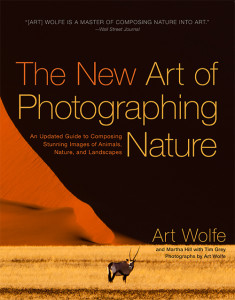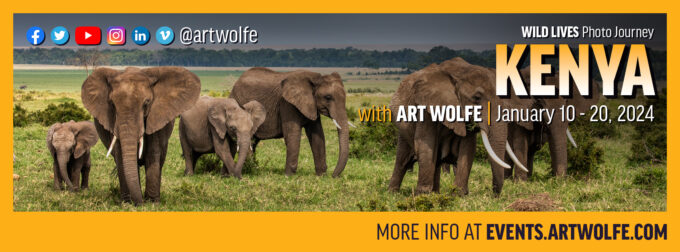Lessons From the Field: Isolating the Subject
 The following is an abbreviated excerpt from The New Art of Photographing Nature.
The following is an abbreviated excerpt from The New Art of Photographing Nature.
The first decision every photographer must make is simply what to photograph. The best place to start, of course, is finding what appeals to you. If finding subject matter to photograph is easy, making it stand out is harder. Our first impulse when something catches our eye is to simply point the camera, center the subject, and shoot the picture. No surprise, then, that when we look at it later, we are all too often disappointed and wonder, “Why did I take that?”
The novelist and critic Henry James wrote, “In art, economy is always beauty.”
In a landscape, there is often a glut of information. For that reason, artists who sketch in the field will often take a piece of cardboard with a rectangle cut from the middle. By holding it
up to frame various sections in the scene, they can isolate what has potential to make a strong composition.
This can also be a valuable aid for photographers who have trouble visualizing the potential field of view of different focal length lenses. The closer you hold the hole in the board to your eye, the more it approximates the field of view of a wide-angle lens. The farther away you hold it, the more it resembles what a telephoto lens might see.
Isolating the subject is the first step in making a strong composition. This can be achieved in a number of ways-coming in close, backing up, looking down, looking up, changing the direction
of the light on the subject, waiting for another time of day, blurring the action or stopping the action, using selective focus to blur unwanted elements, putting a light subject against a dark background. All of these are potential creative solutions that We will address throughout this book.
Isolating your emotional response to the subject may be more complicated and take time and practice, but it is an important step for an artist. If you can analyze why you feel drawn to make a picture, and work to express the feeling clearly, chances are someone looking at it will ah respond with more than passing interest.
The image gallery above are all examples from my travels to Kenya in which I wanted to focus more on the emotions, textures, and compositions of isolated subjects and families. I’ll be heading back to Kenya in January – join me and make your own memories!



Leave a Reply